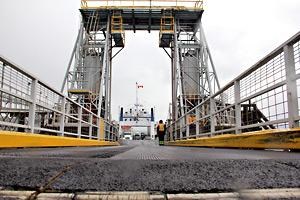NEW Provincial officials held pre-consultation meetings with two key groups last week in advance of a wider public consultation about BC Ferries’ service levels for coastal communities.
The public engagement process, which representatives from the ministry of transportation and infrastructure are organizing, is about the long-term viability of ferry service, including efficiency targets and service levels.
The efficiency target has been set at $54.2 million over four years. Service level adjustments are expected to contribute $30 million. It’s also expected some routes servicing Powell River will be under the microscope when the provincial government starts public consultation sometime this fall.
Ministry officials, including the assistant deputy minister who holds the ferries file and the director of the marine branch, as well as the province’s consultant on the project, Judy Kirk, attended meetings with representatives from 12 coastal regional districts and the Islands Trust in the morning on Wednesday, October 17 and with chairs of ferry advisory committees in the afternoon.
Colin Palmer, Powell River Regional District board chair who leads the regional district group, stressed that the provincial government is organizing the public consultation process, not BC Ferries. “They’re going to put proposals in front of people as to what might be possible with the ferry system,” he said.
The group was presented with charts that showed capacity levels on different routes, Palmer said, but there was no breakdown of which ferry runs had heavy commercial traffic, or no accounting of how many passengers were on some of the runs.
As well, the plan is to have people fill in surveys, but without a lot of background information, Palmer added. “There were some questions like, would you prefer a bridge or a cable ferry,” he said.
People are informed there’s a possibility of having bridges, Palmer said, but it’s not explained that communities would also have to pay for the bridges. “In other words, if you don’t have a ferry, you’re going to have to pay for a bridge,” he said.
Ministry officials will be sitting with residents who are being asked to consider sacrificing ferry runs or capacity issues on ferries, Palmer said, yet they have just been told ferry fares are increasing 12 per cent, compounding for the next three years. “They’re going to be thinking, ‘you want me to help?’” Palmer said. “Psychologically, it’s not a good situation to be in.”
The group is writing to Mary Polak, minister of transportation and infrastructure, to suggest she may want to delay the process, because there were more questions than answers, Palmer said. “She might find it far more preferable to have a good process, so that the communities and she can eventually get some good results,” he said. “What we thought was, she could get herself into a lot of trouble by having a process that wasn’t fully fleshed out.”
Bill Cripps, chair of the Northern Sunshine Coast Ferry Advisory Committee, said officials went through three separate aspects of the consultation. His group was presented with three sets of handouts. “It gave us a chance, as we went through, to offer up some feedback, which we did a lot of,” he said.
There’s also an opportunity to discuss the proposed process with committee members and provide more input, Cripps said, which his committee is doing. “We’ll have the opportunity as a ferry advisory committee to offer up some feedback,” he said.
Cripps also said he had prepared a one-page document with suggestions. “I was trying to be a little bit proactive,” he said. “It involves consultation that I think would be adequate for our community, which involves Texada Island and the mainland.”
Ministry officials plan to visit coastal communities for the public consultation process over the next two months.



